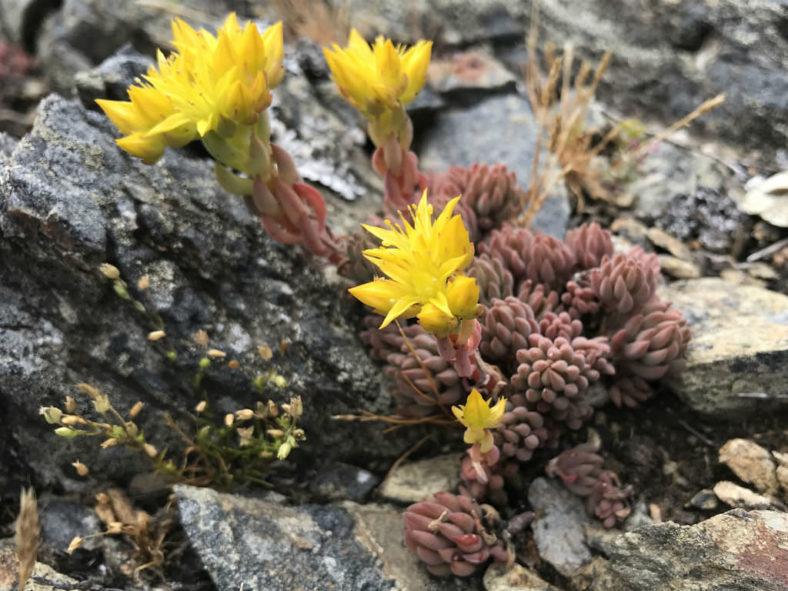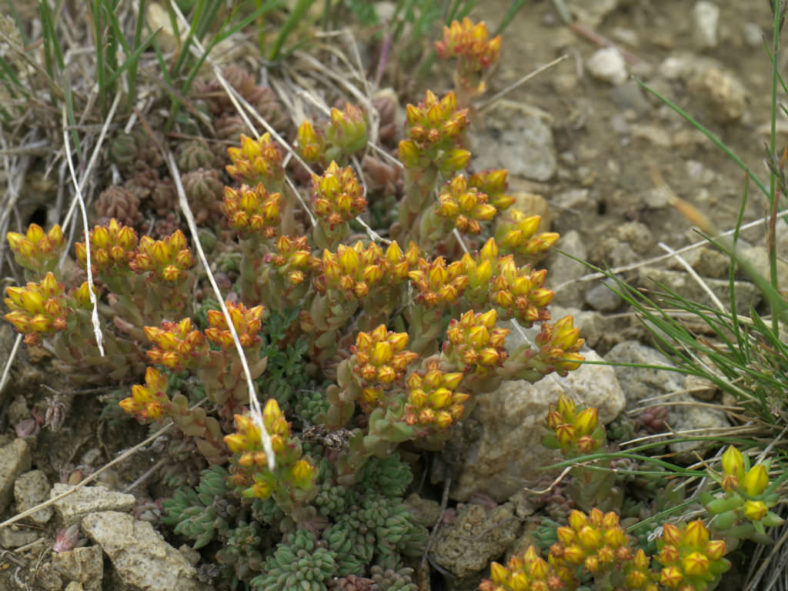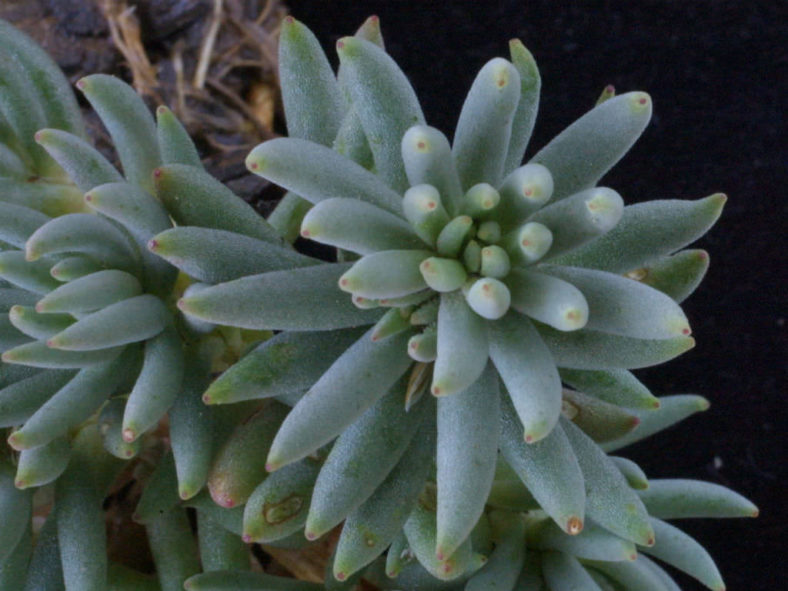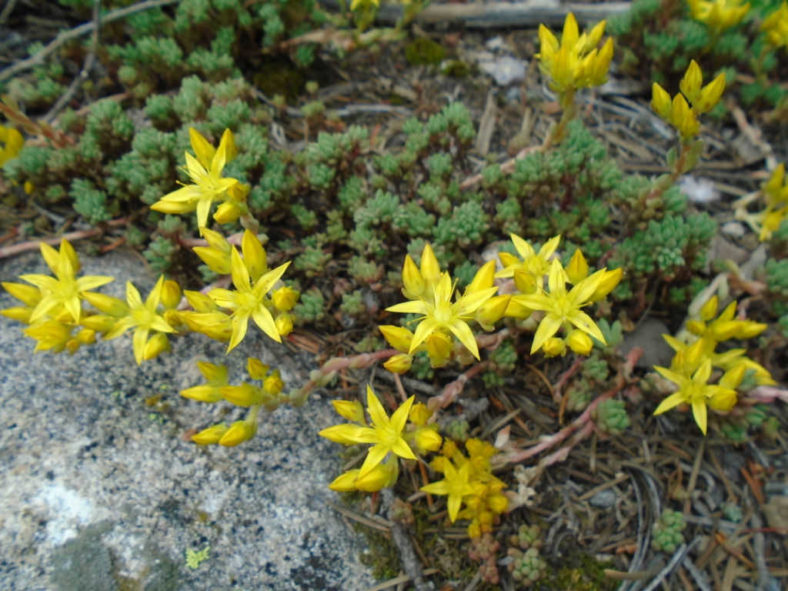Scientific Name
Sedum lanceolatum Torr.
Common Name(s)
Lanceleaf Stonecrop, Lance-leaved Stonecrop, Spearleaf Stonecrop
Synonym(s)
Amerosedum lanceolatum, Sedum lanceolatum subsp. lanceolatum, Sedum shastense
Scientific Classification
Family: Crassulaceae
Subfamily: Sempervivoideae
Tribe: Sedeae
Genus: Sedum
Etymology
The specific epithet "lanceolatum (lan-see-oh-LAY-tum)" derives from the Latin "lanceolatus," meaning "armed with a lance or having the form of a lance" and refers to the shape of the leaves.
Origin
Sedum lanceolatum is native to western Canada and the United States. It grows in exposed, rocky mountainous habitats at elevations of up to 13,280 feet (4,050 m) in the Rocky Mountains.
Description
Sedum lanceolatum is a succulent plant that forms rosettes of green, gray-green, blue-green, or reddish-green leaves with papillose surfaces. The rosettes elongate to about 8 inches (20 cm) in late spring and summer and form leafy flower stalks. The leaves are lance-shaped, round in cross-section, and can grow up to 1.2 inches (3 cm) long.
The flowers are star-shaped, yellow, sometimes tinged with red, and appear in clusters.
Sedum lanceolatum is the host plant of the butterfly species Parnassius smintheus.

How to Grow and Care for Sedum lanceolatum
Light: Sedums grow best in locations where they will enjoy the full sun for at least six hours daily. Most species will tolerate partial shade but will not thrive in deep shade. Therefore, keep indoor S. lanceolatum in a sunny window or under artificial lights.
Soil: These succulents do not like to sit in waterlogged soil, so drainage is essential to prevent root rot. Choose a well-draining soil mix.
Hardiness: Sedums are tolerant of heat and freezing temperatures. S. lanceolatum can withstand temperatures as low as -20 to 30 °F (-28.9 to -1.1 °C), USDA hardiness zones 5a to 9b.
Watering: These plants are drought-tolerant but do need some water. S. lanceolatum does it best with regular watering from spring through fall. Water thoroughly and wait for the soil to dry out before watering again.
Fertilizing: A balanced organic fertilizer each spring is generally all Sedums require. Feeding is unnecessary as long the plant is divided annually and provided with fresh soil.
Repotting: Sedums in containers do require a little more care than those in gardens. Repot your S. lanceolatum when it outgrows its current pot by moving it out to a larger container to hold the plant better.
Propagation: Once you have one Sedum, it is easy to make more by taking stems or leaf cuttings and dividing the plant. Sedums are also easy to grow from seed. Take cuttings in spring when the plant is in active growth. Once S. lanceolatum has finished flowering, it is the right time for division. Spring or summer is the best time to sow the seeds.
Learn more at How to Grow and Care for Sedum.
Toxicity of Sedum lanceolatum
Sedums are not listed as toxic for people but can be mildly toxic to pets and children.
Links
- Back to genus Sedum
- Succupedia: Browse succulents by Scientific Name, Common Name, Genus, Family, USDA Hardiness Zone, Origin, or cacti by Genus
Photo Gallery
Click on a photo to see a larger version.


